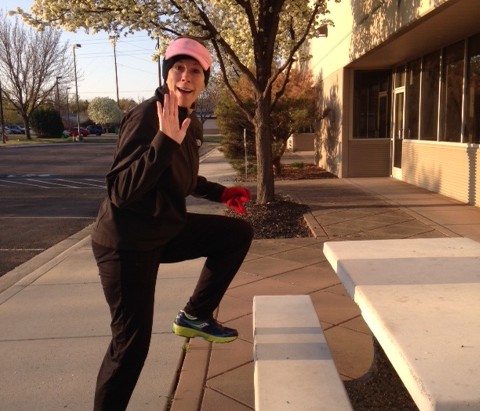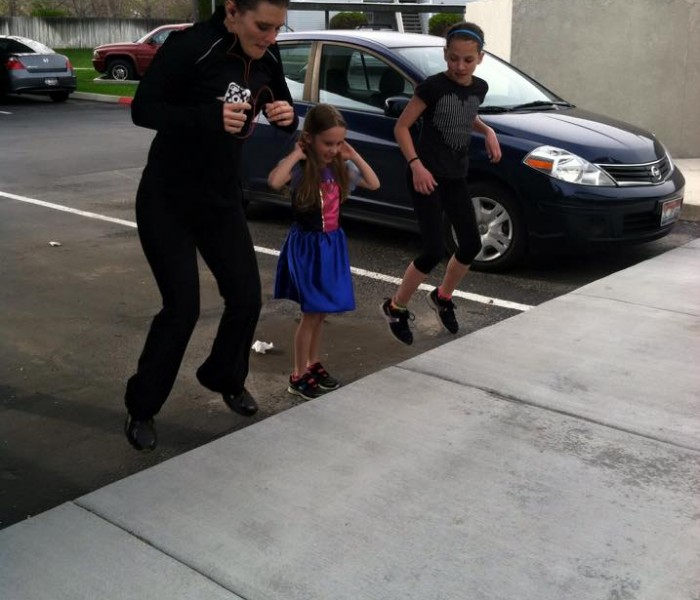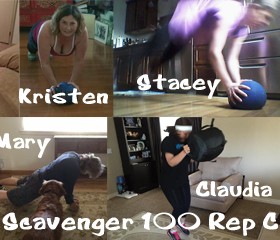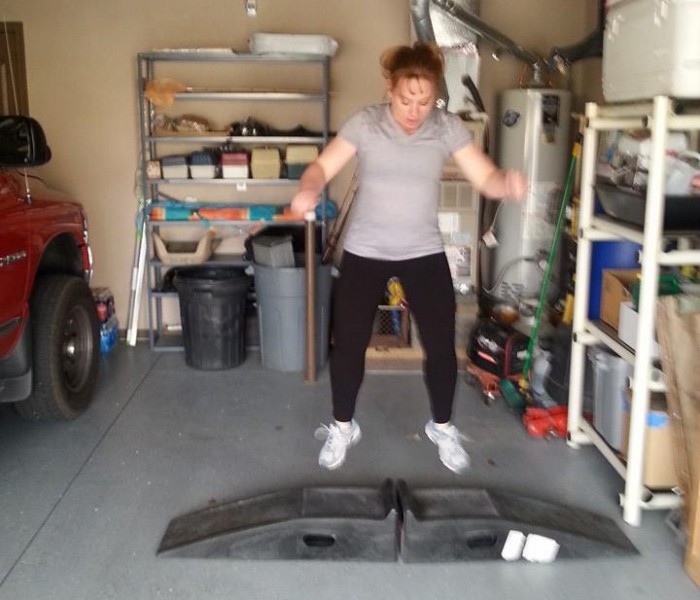This
post was originally published on
this sitehttp://www.marksdailyapple.com/
 So you’re thinking about investing in an air purifier for your home. Perhaps you’re worried about allergens, mold, wildfire smoke, volatile organic compounds (VOCs), or weird smells in your house. Maybe now that you’ve done a bunch of other work to “clean up” your body and environment—eliminating oxidized seed oils, swapping out your personal care products, getting that reverse osmosis system to filter your water—the next logical step is making sure you’re breathing the cleanest air possible.
So you’re thinking about investing in an air purifier for your home. Perhaps you’re worried about allergens, mold, wildfire smoke, volatile organic compounds (VOCs), or weird smells in your house. Maybe now that you’ve done a bunch of other work to “clean up” your body and environment—eliminating oxidized seed oils, swapping out your personal care products, getting that reverse osmosis system to filter your water—the next logical step is making sure you’re breathing the cleanest air possible.
You go to the store and get hit with sticker shock when you see small units for going upwards of a thousand dollars or more. Are air purifiers really worth the price, you wonder? Sure, they might be worth it if they work as advertised, but that’s if they work.
The good news is that home air purifiers do a pretty good job churning out cleaner air, provided you select the right one. They have some cons, though, too:
- Air purifiers can be expensive and noisy.
- They require regular maintenance to work properly.
- They won’t completely purify the air in your home, especially if you choose the wrong device.
Not everyone needs an air purifier, but it’s definitely worth considering, especially if you live some place with poor air quality or you have respiratory issues. Before whipping out your credit card, here’s what you need to know about selecting the best one for you.
How Do Air Purifiers Work?
There are many types of air filters and air cleaners, from big industrial units to the filtration systems built into your home’s HVAC to portable air purifiers you can place around your home. The latter are what we’re covering today.
Air purifiers can roughly be divided into two categories:
Mechanical air purifiers use filters to remove particulates from the air, including dust, pet dander, pollen, mold and fungal spores, and potentially even some microbes like viruses. These filters trap and hold the particles, preventing them from returning to circulation.
Electronic air purifiers—ionizers and electrostatic precipitators—electrically charge particles, which causes them to attach to surfaces so they are no longer floating around in the air for you to inhale. Some electronic air purifiers include collection plates to attract the charged particles, while others send them back into the room to stick to walls, furniture, or floors.
Both technologies remove physical particles from the air, not gases like VOCs. VOCs are chemicals that are emitted by a wide variety of items you already have in your home, such as paints, glues, cleaning products, cosmetics, carpet, upholstery, and more. These chemicals have been linked to both acute and long-term health issues. Activated carbon filters can absorb gases and reduce odors.
Some air purifiers will also use ultraviolet (UV) lights to kill living organisms like viruses, bacteria, and fungi. Heavy-duty units in hospitals often use a combination of mechanical filters and UV lights, but they’re also available for home use.
Air Purifier Benefits and Limitations
Air purifiers have been extensively tested and mostly proven effective for removing potentially harmful substances from the indoor air we breathe. (I’ll talk about which are best below.)
However, there is only limited evidence that this translates to measurable health benefits. They might help with allergies and possibly asthma. Otherwise, their value seems to lie in users’ subjective evaluations of breathing easier.
The general consensus among experts, including the Environmental Protection Agency (EPA) in the U.S., is that the best way to improve your home’s environment is to use air purifiers in conjunction with frequent cleaning, good ventilation, and removing potentially harmful substances. For the cleanest indoor air possible,
- Vacuum and change sheets frequently to minimize allergens and dust.
- Ensure good ventilation via windows (assuming the air outside your home isn’t polluted or smoky) and a well-maintained HVAC system.
- Use safer cleaning products, low-VOC paint, and the like.
- Deal with mold at the source using approved remediation methods.
- Don’t smoke indoors (obviously).
Know that air purifiers aren’t tested for their ability to remove gases like radon or carbon monoxide, even if they include activated carbon filters. If you’re concerned about those substances, hire an expert to test your air quality and provide guidance.
Choosing the Right Air Purifier
First and foremost, what are your goals? Do you want to clean, sanitize, or deodorize your air?
- To clean your air—remove particulate matter like dust, pollen, smoke, and spores—HEPA filters are what you need.
- To sanitize—kill mold, viruses, or other living organisms—look for a combination HEPA filter to trap them and UV light to deliver the killing blow.
- To deodorize or remove gases like VOCs, you want an activated carbon filter.
Opt for an air purifier that uses a physical (HEPA) filter instead of electronic air filters. Electronic air filters emit ozone, a potential lung irritant. At low levels, ozone can cause symptoms like nausea or headaches; at high levels, it’s quite dangerous. Although the amount of ozone produced by these devices is supposed to be fairly minimal and too low to cause health issues, it can vary based on how you use the unit in your home.
Speaking of ozone, there’s another type of air purifier, ozone-generating cleaners, that pump out ozone to (supposedly) neutralize chemicals in the air. This process can ironically create potentially harmful byproducts you wouldn’t want to breathe in. Ozone-generating cleaners also can’t remove particulate like dust or dander from the air, and the EPA is very clear: “If used at concentrations that do not exceed public health standards, ozone applied to indoor air does not effectively remove viruses, bacteria, mold, or other biological pollutants.” I’d stay away from these.
Once you’ve settled on the type, check the specs on the models you’re considering:
- Purifiers that are AHAM Certifide have been independently tested by the Association of Home Appliance Manufacturers.
- Energy Star-rated appliances will use less electricity, which is worth considering for an air purifier you might be running day in and day out, year-round.
- The CADR score tells you the clean air delivery rate—how effective the unit is, essentially. The higher the better, and the bigger your room, the higher the CADR you need. The AHAM, which is responsible for testing and verifying CADR, recommends that the CADR be at least 2/3 of the room’s area in square feet. So, if your room is 12 feet by 12 feet, that’s 144 square feet, and you’ll want a CADR of at least 95 (or more if the room has high ceilings).
If you’re opting for a physical filtration system, look for a true HEPA filter, not “HEPA-like” or “HEPA-style.” Those latter terms don’t mean anything. If choosing a non-HEPA filter, check the MERV (multiple efficiency rating value). This indicates how well the filter removes small particles, with higher numbers being better. MERV ratings of 13 or higher seem to be the gold standard.
Finally, you’ll want to consider noise level and price. Bear in mind that filters need to be replaced regularly, every 3 to 12 months depending on your air purifier. Factor that into the cost, especially if you’re considering an air purifier with multiple different kinds of filters. You might want to look for one with washable and reusable filters.
DIY Air Purifier
I was skeptical of all these photos you see online of people taping HEPA filters to the front of a basic box fan, but it turns out that it probably works! The Puget Sound Clear Air Agency has tested and endorsed this method. The California Air Resources Board likewise concedes that DIY purifiers can combat wildfire smoke indoors, although they still recommend using commercially manufactured devices. They also caution that you should choose a fan manufactured after 2012 because it will have a fused plug that cuts down on the fire danger if the fan falls over or overheats (a small risk to begin with), and only run the filter when you are in the room and awake out of an abundance of caution.
Considering that you can assemble a DIY air purifier for less than 50 bucks, it seems worth a shot. Here’s how you do it:
- Get a fan. Any size or shape will do, but the more powerful the motor, the better. One side of the fan needs to be flat.
- Get a HEPA filter or a filter with MERV rating of 13 or higher that is big enough to cover the flat side of the fan completely.
- Secure the filter to the fan, making sure that air can’t escape out the sides. Seal it with duct tape if necessary. Air is meant to go through the filter in one direction, indicated by arrows on the side of the filter, so make sure you have it oriented correctly.
- Run the fan and enjoy your sweet, sweet cleaner air.
As with commercial air purifiers, how effective it is depends on the size of your room, the amount of air the fan is able to move, how much you run it, and how clean the filter is. You can always test how well your DIY set-up works by procuring a digital air quality monitor and doing before-and-after tests with your homemade device. (This is also a good way to see if you need an air purifier in the first place.)
What If I Just Fill My Room with Houseplants?
I’m all for getting as many houseplants as you can reasonably fit in one space. Unfortunately, though, they probably won’t deliver the air purifying benefits you want. There’s some evidence that they remove carbon dioxide and VOCs, but they won’t filter out dust or allergens, for example. Get houseplants, sure, but get a proper air purifier if you need one, too.
Bottom Line: Do Air Purifiers Work?
Air purifiers do what they are supposed to do: remove stuff like pollen, dander, spores, and smoke that you’d rather not breathe. The most effective ones aren’t cheap, but you can get a well-rated unit for a small-ish room for a couple hundred dollars. You’ll probably be happy with your investment as long as you buy the right type of air purifier for the job and maintain it regularly. If you don’t clean and replace your filters on the manufacturer’s recommended schedule, they won’t work as well.
Just don’t expect them to completely eliminate allergy symptoms, asthma, or other health issues. Remember, cleaning your home—vacuuming, dusting, changing your sheets—is the first line of defense in keeping allergens and dust at bay. Air purifiers add an additional layer of protection.
As someone who lives in wildfire territory, I’ll probably be investing in an air purifier this year, or perhaps making my own. Tell us in the comments if you’ve tried an air purifier in your home and what benefits you experienced, if any.
The post Do Air Purifiers Work? appeared first on Mark’s Daily Apple.






 So you’re thinking about investing in an air purifier for your home. Perhaps you’re worried about allergens, mold, wildfire smoke, volatile organic compounds (VOCs), or weird smells in your house. Maybe now that you’ve done a bunch of other work to “clean up” your body and environment—eliminating oxidized seed oils, swapping out your
So you’re thinking about investing in an air purifier for your home. Perhaps you’re worried about allergens, mold, wildfire smoke, volatile organic compounds (VOCs), or weird smells in your house. Maybe now that you’ve done a bunch of other work to “clean up” your body and environment—eliminating oxidized seed oils, swapping out your 
 For now classes are 6pm and 640pm at 2840 Wildwood st in the Boise Cloggers studio.
Book your class NOW!
click this ==>
For now classes are 6pm and 640pm at 2840 Wildwood st in the Boise Cloggers studio.
Book your class NOW!
click this ==>








